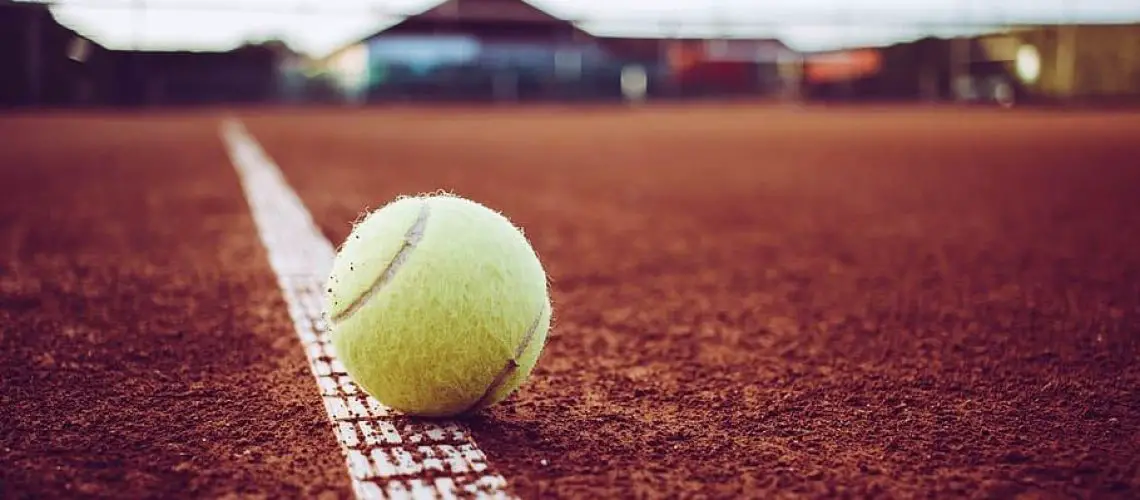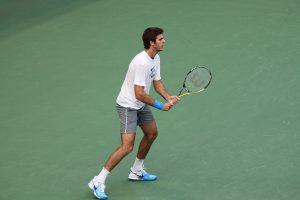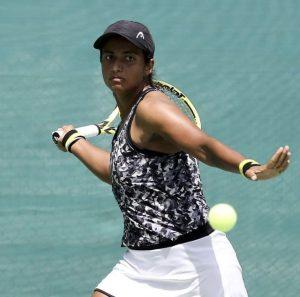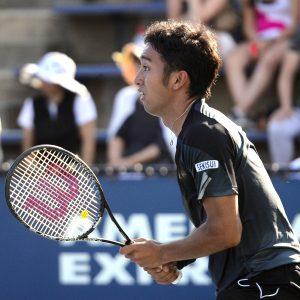We may earn money or products from the companies mentioned in this post.
Introduction

Tennis is a sport that requires precision, agility, and skill Whether you’re a professional athlete or an enthusiastic amateur, the condition of the tennis court can greatly impact your game That’s why resurfacing tennis courts is not just a matter of aesthetics but also of safety and performance By investing in resurfacing, you can ensure that your playing surface is safe to use, visually appealing, and optimized for optimal gameplay
Safety Concerns
One of the primary reasons for resurfacing tennis courts is to address safety concerns Over time, tennis courts may develop cracks, uneven surfaces, or other structural issues that can pose risks to players These imperfections can cause players to trip or twist their ankles during intense matches By resurfacing the court, these hazards are eliminated, providing a safer environment for everyone involved
Aesthetic Improvement
Aesthetics play a crucial role in any sport, including tennis A well-maintained court with vibrant colors and crisp lines not only enhances the overall look but also creates a positive atmosphere for players and spectators alike Resurfacing allows you to revitalize your tennis court by applying fresh coats of paint and repairing any visible damages This not only boosts the visual appeal but also adds value to your facility
Performance Enhancement
The condition of the playing surface directly impacts the quality of gameplay Worn-out courts with inconsistent bounces can disrupt shots and affect player performance Resurfacing helps restore the original playability by addressing issues such as cracks, rough patches, or faded lines The new surface provides better traction for quick movements and facilitates smooth ball interaction with predictable bounces—allowing players to focus on their skills without worrying about external factors
By understanding the importance of resurfacing tennis courts, you can make informed decisions to maintain a safe, visually appealing, and high-performing playing surface Whether you’re a facility manager or a passionate player, investing in regular resurfacing will undoubtedly contribute to an enjoyable and successful tennis experience
Assessing the Tennis Court’s Condition

When it comes to maintaining a tennis court, assessing its condition is a crucial step in ensuring optimal performance and safety By identifying common issues, inspecting drainage systems, and determining the need for professional evaluation, you can address any potential problems before they escalate Let’s dive into each aspect of this assessment process
Identifying Common Tennis Court Issues
The first step in assessing a tennis court’s condition is to identify any common issues that may arise over time Cracks and deterioration are often seen on older courts due to weather conditions or heavy usage These cracks not only affect the aesthetic appeal but can also impact gameplay and player safety
Surface depressions and low spots are another concern as they can lead to uneven ball bounce and pose a trip hazard for players Additionally, fading or peeling paint on the court surface not only diminishes its appearance but can also affect visibility during gameplay
Inspecting Drainage Systems and Surrounding Areas
In addition to evaluating the court surface itself, it is essential to inspect the drainage systems and surrounding areas Improper drainage can result in water pooling on the court after rain, leading to slippery surfaces and potential damage over time
Evaluating gutter conditions is crucial as clogged or damaged gutters can contribute to water accumulation on the court surface during heavy rainfall Checking for standing water problems around the court area is also important as excessive moisture can seep into the foundation, causing structural damage in the long run
Determining the Need for Professional Evaluation
While regular inspections by facility managers or maintenance staff are essential, some issues may require professional evaluation It is crucial to determine when it’s necessary to call in experts who specialize in tennis court maintenance and repair Professional evaluation can provide a comprehensive assessment of the court’s condition, identifying any hidden issues that may not be apparent to the untrained eye
In conclusion, assessing a tennis court’s condition involves a thorough examination of common issues such as cracks, surface depressions, and paint deterioration Additionally, inspecting drainage systems and surrounding areas is crucial to prevent water-related problems Knowing when to seek professional evaluation ensures that any underlying issues are addressed promptly, maintaining the court’s performance and longevity for players to enjoy
Preparation for Resurfacing

When it comes to resurfacing a tennis court, proper preparation is key Before diving into the resurfacing process, there are several crucial steps that need to be taken Let’s take a closer look at these steps and how they contribute to achieving a successful resurfacing job
Cleaning the tennis court surface
Before any repairs or resurfacing can begin, it’s important to thoroughly clean the tennis court surface This involves removing any debris and dirt that has accumulated over time By clearing away this unwanted material, you create a clean canvas for the upcoming work
One effective technique for cleaning the surface is power washing This high-pressure water spray method helps dislodge stubborn dirt and grime, leaving your tennis court looking fresh and ready for the next step
In addition to general cleaning, it’s essential to address any mold, mildew, or algae growths on the surface These can not only affect the appearance of your tennis court but also compromise its longevity Using appropriate cleaning agents and techniques, you can effectively eliminate these growths and prevent them from returning in the future
Repairing cracks, depressions, and damage
The next phase of preparation involves repairing any cracks, depressions, or other forms of damage present on the tennis court surface It’s crucial to select suitable repair materials that will provide long-lasting results
Filling cracks is an important part of this process as it ensures a smooth and even playing surface By using specialized crack filler compounds or asphalt patch materials specifically designed for tennis courts, you can effectively seal off these imperfections
To achieve optimal results when repairing depressions or low spots on the court surface, a patch binder mix can be applied This mixture helps level out the surface, ensuring a consistent bounce and minimizing any potential hazards
Primer application
Before applying the final resurfacing layers, it’s essential to apply a suitable primer to the repaired areas The choice of primer is crucial as it provides adhesion between the existing surface and the new resurfacing materials
By selecting a primer specifically designed for tennis court surfaces, you ensure proper bonding and enhance the longevity of your resurfacing job Applying the primer evenly over the repaired areas guarantees a smooth transition between the old and new surfaces
In conclusion, proper preparation is vital when it comes to resurfacing a tennis court Cleaning the surface effectively removes debris and growths, while repairing cracks and damage ensures an even playing surface Applying an appropriate primer prepares the surface for optimal adhesion with the new resurfacing materials By following these steps meticulously, you set yourself up for success in achieving a durable and visually appealing tennis court surface
Resurfacing Process & Finishing Touches

When it comes to resurfacing a surface, selecting the right material is crucial for achieving a durable and visually appealing result There are several options to choose from, each with its own unique benefits Acrylic coatings provide a smooth and glossy finish, while cushioned surfaces offer enhanced shock absorption for added safety For those looking to create a lush green space without the hassle of maintenance, artificial grass is an excellent choice
Once the surfacing material has been chosen, it’s time to apply it to the desired area Proper mixing of materials ensures consistency and optimal performance To achieve an even application, squeegees are used to spread the material evenly across the surface After application, allowing adequate drying time is essential to ensure a long-lasting and durable finish
To enhance functionality and aesthetics further, painting lines and markings on the newly resurfaced area can be done Choosing durable line paint that can withstand heavy traffic is important for longevity Accurate measurements are then applied using tape or stencils to ensure straight lines and precise markings
Maintaining your newly resurfaced area is key to preserving its beauty and functionality over time Regular cleaning helps remove dirt, debris, and stains that may accumulate over time Promptly repairing minor damages such as cracks or chips prevents them from worsening and compromising the integrity of the surface Performing seasonal maintenance checks allows you to identify any potential issues early on and address them before they become significant problems
Useful Links

How Much Does it Cost to Resurface a Tennis Court
How much does it cost to resurface a tennis court?
Cost of Tennis Court Resurfacing and Repair for Schools …
What Is Tennis Court Resurfacing? Do You Need It?
2.P. – Resurfacing Asphalt Tennis Courts
Utah Tennis Court Refinishing and Resurfacing
Life of a Tennis Court
Tennis Court Resurfacing Process And Cost Factors
The Advantages of Tennis Court Resurfacing
Cost to Resurface or Repair a Tennis Court (2023)
When to Repair, Resurface, or Replace a Tennis Court
Tennis Court Resurfacing | Pickleball Construction
Why Is It Important To Have Your Tennis Court Resurfaced?
Things to Keep In Mind When Resurfacing a Tennis Court
Tennis Court Resurfacing – Sport Court of St. Louis
Tennis Court Resurfacing and Repair | Western NY
How to Do Old Tennis Court Resurfacing






